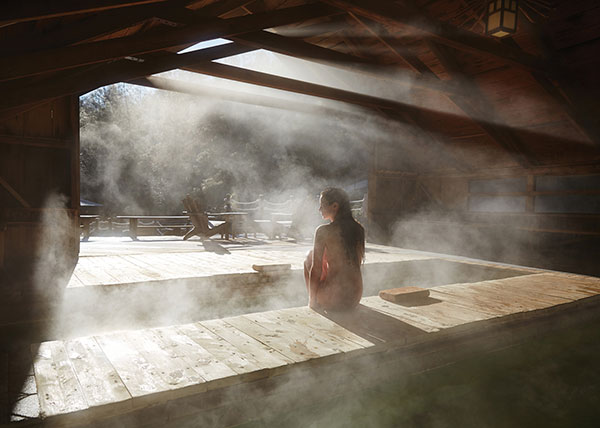The State Of Stock Photography Today: Still A Viable Option? These Pros Think So

Microstock and subscription downloads are appealing to photography clients, though perhaps not so much to photographers. The term “microstock” is said to have been derived from the “micro-payment” the client makes for the image, which morphed into microstock. Subscription-based is the newest business model and the short version is that clients purchase a monthly or pay-on-demand subscription to download X number of images per day depending on the payment plan.
Our aim here is to tell you about the side of stock that might actually be a viable part of your photo business, although the reality check, as usual in this column, remains in place. As you will see from our interviews with photographers marketing their images, working with a good stock agency and offering great images are all integral parts of a successful stock business.
Thanks go to the photographers interviewed for this column (their website resources are at the end of this article): Leland Bobbé, Shannon Fagan (FangXiaNuo Technology Consulting Co. Ltd.), Jon Feingersh, Tom Grill, John Lund, and Trinette Reed (Trinette Reed + Chris Gramly).

Shutterbug: What are the benefits/disadvantages of using a stock agency vs. licensing your own stock photos?
Tom Grill: At this point in the stock photography industry it is nearly impossible to drive enough traffic to your own site to make any kind of meaningful income. It is far more lucrative to market your images through an agency, regardless of the cuts and percentages. Photographers tend to get very hung up on giving up percentage points, but if the end user cannot find you, there will be no sale in the first place. The big agencies have the money to maintain effective websites and do the marketing required to sell pictures in this day and age.
John Lund: I make so many sales through agencies that I would never have the time, nor the interest, in dealing with handling my own sales. All I want to do is make images (and money) and let someone else deal with negotiating, marketing, and all the other hassles of the business end. Sure, I get a smaller percentage, but I make far more money than I could selling the imagery myself, with none of the problems. I do sell some myself, which keeps me aware of how much I like to have my work with the agencies.
Leland Bobbé: In theory it would be great to sell your own stock photography and keep 100 percent of the license fee. However, in reality I think it would be very hard to get the traffic to your own stock site necessary to make any real money unless the photography is highly specialized and very specific. In addition, there would have to be much effort put into search engine optimization. I believe it would be just too hard to compete with distributors like Getty and Corbis and many of the microstock sites.
Trinette Reed: We prefer using agencies because we have found it to be too much work trying to set up a website, generate traffic, and deal with customers directly. There is so much behind-the-scenes work that goes into creating a successful outlet for selling stock photos and it is not what we like to spend our time doing; we would rather be out shooting and creating content.
Jon Feingersh: There is no benefit whatsoever in trying to market your own photographs. When Getty, Corbis, Shutterstock, Blend Images, and others are all having problems gaining—or even retaining—their market share, there is no possibility of making enough sales directly to justify the attempt to do so.
Shannon Fagan: We operate in Mainland China where direct licensing requires significant infrastructure to handle governmental media controls, financial accounting differences, legal differences, as well as longer sales cycles. Using a licensing agent locally is a crucial working relationship decision and a protective measure for the business model. Globally, I continue to support using stock agencies for licensing one’s content. The use of an agent is advantageous for the freedom that it provides to the production unit/photographer to focus on their technique, management, and creation of images.
There are more “direct” licensing options coming online, including PhotoShelter, liveBooks, and newcomer LightRocket. All of these are non-exclusive options that allow for a contributor to license through their platforms at generally higher royalty rates than other traditional stock agencies, including microstock. For financial reasons and volume of downloads, these direct licensing options are best pursued with the non-exclusive arrangements that they provide in conjunction with standard licensing options through other stock agencies.




SB: How do you think microstock factors into the state of stock photography today?
Jon Feingersh: As an old-timer who used to love the “golden days” of mostly RM stock, I have always had a dislike of distribution models that cheapened the value of stock photographs. RF was the first slide down this slippery slope, and microstock accelerated the downward pressure on pricing. This was caused by several reasons, but mostly photographers felt that they could produce images for the marketplace and customers who saw cheaper and cheaper prices assumed that all images had less value. Microstock is the lowest common denominator of visual quality and craftsmanship. And anyone who thinks they can make any income in that distribution model should be advised, that train has already left the station.
Tom Grill: Microstock is the vehicle that has allowed amateurs to get their images into the marketplace. This has created pricing competition for the low end of stock photography. The simple, cheaply produced, and “found” photography that professionals used to be able to sell for good money has mostly been co-opted by microstock. This means that professional photographers who shoot a wide variety of subject matter must earn all of their income from highly produced images. Now, pros have to spend all their time on high-end productions and forego that easy income that used to balance out the effort and time/money spent to shoot.
The best stock photographers make substantial investments of time, money, and talent in their product. A substantial return is necessary to support this business model. Most microstock agencies, due to their low pricing model, do not return enough to make this business model possible. As a result, the better stock photographers must seek more traditional outlets for their product where images sell for more. Now more than ever that product has to have a premium look to hold a high price line. While the majority of stock imagery today is sold into a low-priced market through microstock, buyers are still willing to pay for a product that is unique and a substantial cut above the norm.
John Lund: Microstock is just the low end of RF, and was inevitable. The advent of microstock, as RF before it, has brought down the prices of all imagery. I wouldn’t say it is good or bad, it just is and we all have to deal with it as best as we can. Obviously, microstock has opened the doors to all kinds of people, made a few quite a lot of money, and increased the challenges of making a living at shooting stock. While I don’t shoot microstock I do have RF images that have found their way into the high-end microstock (think Vetta) collections through Getty and Blend. My admittedly limited experience reaffirms my belief that I am far better off not producing microstock work.


Shannon Fagan: I might rephrase the question as: how does subscription licensing factor into the state of stock photography, since this business model is on a large upswing in the last two years and is being reflected in other e-commerce businesses for software, professional networking sites, online dating sites, television and movie video access, news sites, and more? Subscription income, though perhaps less than individual downloads per image licensing, appears to be remarkably stable. The caveat is that though stable, it is not necessarily sustainable. It is sustainable for the licensing agents, but for the creators it presents no viable option to recoup money spent for responsible investment on content production.
Creating imagery that sells requires research and development time and money spent to develop a unique production. Contributors will all probably agree with me that agencies are rejecting basic imagery more than ever before, citing that an overabundance of supply of such imagery already exists. Travel imagery falls into this category of overabundance, also still life, and practically anything shot on a white background. Even at the most robust subscription levels for downloads, the amounts of money earned is not enough to match up with costs of models, locations, props and wardrobe, and the time and labor expenses of postproduction and submission.
The important thing to recognize is that a significant and growing portion of microstock licensing (and a hefty portion of traditional licensing) is moving to subscription.
Nearly all downgraded imagery (i.e., imagery that is outdated or non-sellers in traditional collections) is automatically moving to low-priced collections; and often by default that includes in one form or another a subscription priced licensing model.
The future requires that most contributors look at subscription as one more licensing type on top of selling into other forms of licensing models at the same time. Diversification of submission strategy is important on the part of the contributor. It would not be recommended at this time in stock photography that contributors be reliant on exclusive relationships in licensing. More than ever, having one image appear everywhere is crucial for sustained financial success. Microstock’s birth and emergence has taught the industry a lesson in that.


SB: What kinds of images do you think work the best as stock? The word “concept” is tossed around a lot so our readers would like specifics for building their stock library shot list.
Tom Grill: Actually, I was the person who introduced the idea of shooting “concepts” into the stock photography lexicon in the first lecture I gave at Photo Expo in New York, and California in the early 1980s. Prior to that, stock photography was entirely subject driven. Since then the idea of shooting concepts for stock photography has gone viral, but is often mistaken as the only element necessary for a successful stock photo. Concepts are at the core of any good stock photo intended for commercial use.
However, the concept must be wrapped in an outer shell of an image that is unique, well crafted, well styled, and contains other elements of premium content such as good models, locations, and props. A good concept alone will not sell a mediocre photo, and the day of making a living in stock photography by simply replicating the core concepts with banal photography is over. To stand out you have to create images that are best of breed to rise above the clutter.
People photography is still quite weak in microstock. If you can execute a great family shoot and capture the everyday moments like sharing time together, eating together, playing and working together, you will do well with the shoot if you use fresh, contemporary styling, excellent direction, thoughtful lighting, and so on. To determine what will sell, photographers must keep aware of current trends and demographics. Topics that are really needed out there right now are: seniors/boomers, industry/engineering/energy, people living an urban lifestyle, and healthcare topics.
John Lund: “Concept” is a tricky word. A shot of a woman walking alone on a beach can be a concept stock and/or a lifestyle shot. Rather than saying this or that sells the best, I would say that images that tell a message and either have an emotional pull or are highly entertaining sell the best. Among the generalities that I have found most true in my own experience are: positive sells better than negative; images with action sell better than static ones; business images and lifestyle both can sell extremely well; and images that are seen sell the best!
Leland Bobbé: There are so many types of images that have the potential to sell well in stock, from complex CGI to simple portraits. I think the most important thing is that the image has something that people can relate to, that makes an emotional statement that is able to illustrate a certain idea or concept. Within the different areas of stock be it business, romance, medical, lifestyle (senior living, kids, teens, romance, families, holidays, travel), the image needs to stand out from the glut of imagery available today. Great casting of people and models is essential.
Trinette Reed: Right now, authentic and believable are the two most important things when creating content for stock for agencies with higher price points. As far as microstock, it’s all about volume and feeding the machine. I think all the obvious concepts like family or business are concepts that customers are always looking for.

Jon Feingersh: One only has to look around to see the huge number of images that sell in stock. Open any newspaper or magazine (if you’re the kind of person who still does that sort of thing) and look at every image used. Most will be happy, smiling people doing some sort of activity. Each image certainly must have a “concept” in order for the picture buyer to feel it will communicate the desired message. But for me, even more important than “concept” is the idea of “resonance.” Resonance is that quality in a visual which causes the viewer to identify with the image (or parts or symbols within the image), and bring to the image a cultural understanding and reinforcement of cultural expectations and experiences. When a photograph contains the correct icons, symbols, action, etc., a resonant experience is caused, and one can reasonably expect the consumer to have a similar experience and be predisposed to the message.
Shannon Fagan: Image use is getting more “real” all the time. Models don’t look like models, but rather like caricatures of stereotypes generated from our collective knowledge of what someone should feel or look like (generally from our vast knowledge of blockbuster movies and cartooning for decades). The more caricature it is, the better it tends to sell, and that does not mean always the strongest, prettiest, and fittest will survive!
We are finding that any classic take on any subject tends to sell particularly well and outperforms the standard “tall and handsome” profiles. One of our best sellers in RM this year for the number of sales that it generated is a plus size individual’s portrait for usage in health campaigns and fitness articles. On the flip side, the best-selling shot financially in terms of the largest amount of money generated is for a robust group of business types that look and feel their age from 20s to 40s. None of them were actual models, and none of them had ever modeled before stepping foot in front of our cameras.
The global market is asking for real people now. To anticipate this need and work with it, contributor suppliers are best advised to position their businesses to make use of the availability of the people around them, make casting techniques that are focused on recruitment to the operation, and harness people interaction and communication skills to make productions fun, engaging, and interactive.

Web Resources
Contributors
Leland Bobbé: www.lelandbobbe.com, www.lelandbobbe.zenfolio.com
Shannon Fagan: www.shannonfagan.com
Jon Feingersh: www.jfstudio.com
Tom Grill: www.tomgrill.com, http://aboutphotography-tomgrill.blogspot.com
John Lund: www.johnlund.com
Trinette Reed: www.trinettereed.com















































